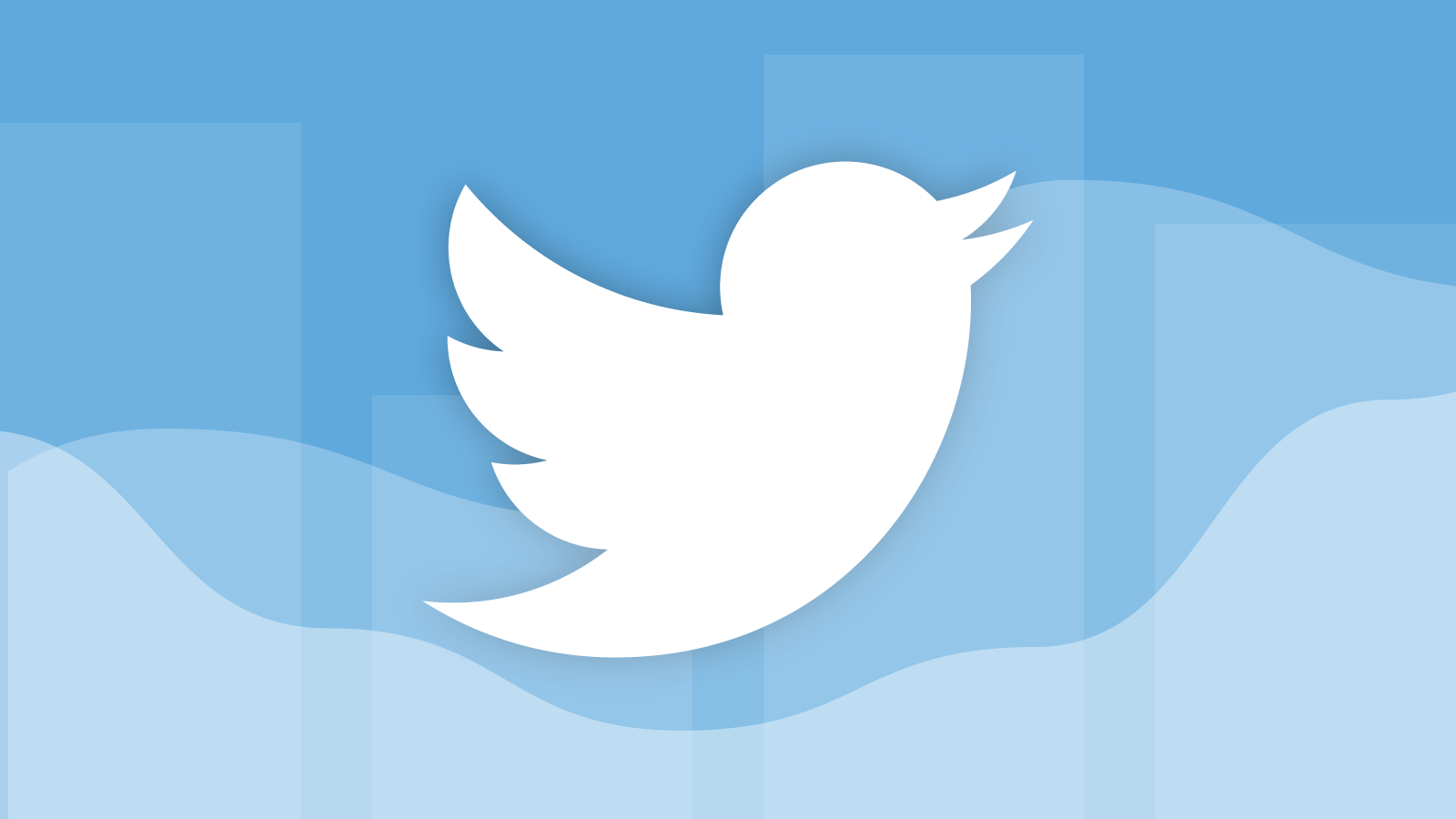 Photo credit: techcrunch.com
Photo credit: techcrunch.com
Imagine a way to get valuable insights about your growth, your audience, and the world at large. That’s Twitter Analytics in a nutshell.
For a while, I only used Twitter Analytics to track my statistics. I tracked my tweets and optimized them based on engagement rates. And while I continue to use Twitter Analytics for that specific purpose, now I use it for other purposes too.
Twitter Analytics can help you grow your business with valuable insights, even if you don’t have a big Twitter audience. Here are seven cool ways to use Twitter Analytics:
#1: Learn How Many People See Your Tweets
I look at impressions to identify how many people see my tweets on any given day — over 100,000 people! Not all impressions equate to clicks (I get a few hundred daily visitors from those impressions), but the statistic is nevertheless underrated.
The thousands of people who repeatedly see my tweets will begin to remember me and what I offer. While these people may not click on most of my tweets, they will click on some of them, and be brought over to my blog.
Why do most people not click? The answer is that not all of my tweets are relevant for everyone in my audience. I provide insights on social media marketing, which means I most often discuss various social networks.
So the majority of people who are only interested in Twitter won’t likely engage with my Facebook blog posts. And the people only interested in Facebook won’t care much about my Twitter blog posts. But they will remember me. And as I become more familiar, I build trust, and often a new subscriber.
#2: Discover Your Month-By-Month Trends
You can track your statistics month-by-month. The cool part about this history is that you can see which months you were dominating, and which months weren’t so good.
If you look deep enough into the analytics, you can also discover why you had a good or bad month. Twitter Analytics arms you with engagement rates, number of tweets sent, number of clicks, and a lot of other awesome information that can help you find a pattern.
These patterns identify the strengths and weaknesses of your current plan. Enhance the strengths and address the weaknesses so each month is stronger than the last.
#3: Identify Your Most Popular Tweets
This feature is really useful because you learn what is resonating with your audience. Twitter Analytics helped me realize that my audience wants more Twitter articles.
I recently looked at my most popular tweets and noticed an interest in the hashtags #blogging and #socialmedia. I am in the process of changing my tweeting pattern to ensure that I am sharing more articles about these topics.
Identify which of your tweets perform the best. Then give your audience more of that type of content. It’s that simple.
#4: Your Audience’s Top Interests
Your tweet engagement can tell what is interesting to your audience, but the Audience Insight feature of Twitter analytics lets you identify important insights.
According to this metric, my audience is most interested in technology, business, entrepreneurship and marketing. So I know I am providing my audience with what they want, and that the occasional article about technology is the icing on the cake.
#5: Your Audience’s Demographics
Twitter Analytics provides you with a lot of useful information. However, the more you delve into your audience demographics, the more valuable Twitter Analytics becomes.
For instance, I recently discovered that I have more male followers than female followers.
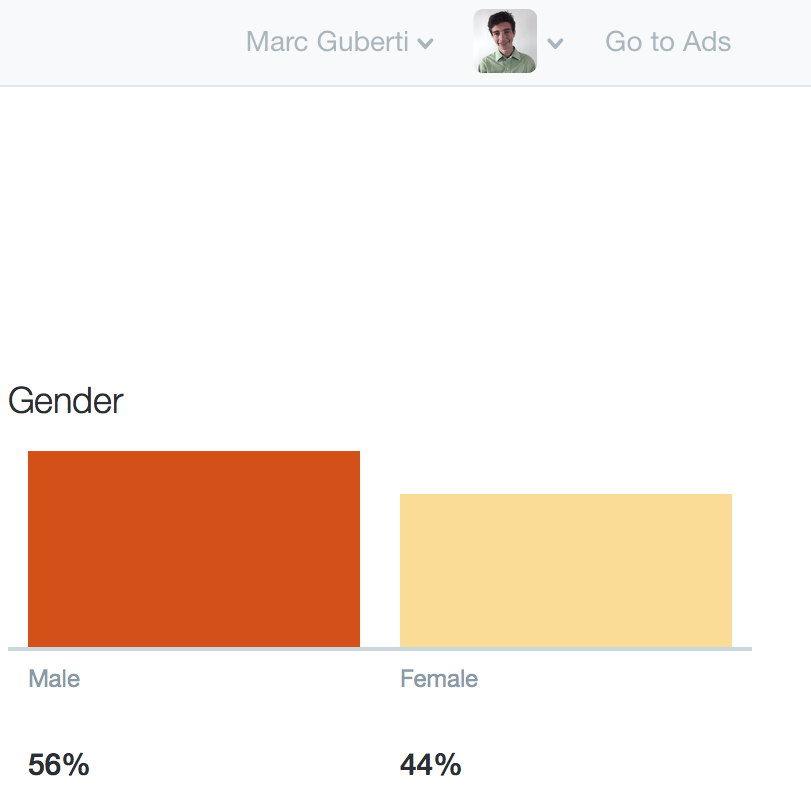
In the business I’m in, I shouldn’t have to target a specific gender; it’s not like I am selling a product or service that is exclusive to a particular gender. I like it when people of any gender visits my blog, but my demographic information tells me that it makes more sense to target women.
How did I reach that conclusion? Here’s where additional demographics come into play. Enter Alexa:
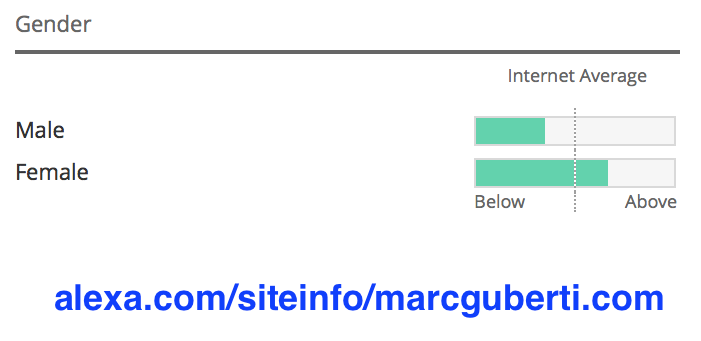
According to Alexa, more women visit my blog than men. Maybe it’s my charm, but I digress. If the ratio was reversed and 59% of my Twitter followers were female, that would mean more traffic. The closer I get that 50/50 ratio, the more traffic I will get from Twitter.
All of these stats are very useful. The income of each person in your audience will help you determine what type of product your audience wants (high-end or low-end).
Knowing where your audience lives helps you if you have a local business or are deciding which locations to target for public speaking.
Before you leave that Audience Demographics page, look at languages your audience speaks. What may look like funky math on Twitter’s end (108%) actually accounts for people who can speak multiple languages.
I’ve got some bilingual followers. That’s useful if I need to pass an exam in another language.
It’s more useful to me from a business standpoint. The first thing these analytics do is verify that I am doing a good job at targeting English speakers. Since I speak English, I want people who speak and understand English.
If all of my followers spoke and understood Chinese, rather than English, I wouldn’t be able to communicate with them. I might as well have bought fake followers (or start learning Chinese).
I have interacted with many people on Twitter. Some were Spanish speakers who tweeted in broken English or their first language.
When they communicate with me in broken English, I respond in English. When they reach out to me in Spanish, I respond in Spanish (a combined effort of five years of Spanish in school and Google translate). Language barriers exist, but you can use them to your advantage.
Translating one of your products into Spanish will help you reach an entirely new audience that you could never reach before. It’s the reason why bestselling books get translated into dozens of languages.
It’s also the reason why Kim Garst came out with a Spanish version of Periscope Profits.
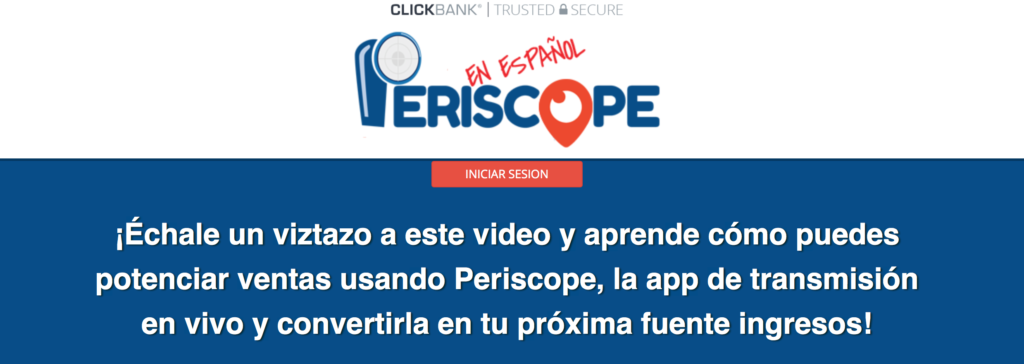
As a Spanish student myself, I’m thinking of visiting the sales page often to refresh my skills. Everything is in Spanish—product benefits, testimonials, the refund policy, and just about everything else you can think of.
Kim Garst understands that she has an audience of people who speak Spanish. What can you do to tap into that additional audience?
#6: Consumer Behaviors
What are your Twitter followers interested in purchasing? Twitter Analytics has the answer.
Consumer Behaviors are broken into three sections:
- Aftermarket Auto Buyers Type
- Consumer Buying Styles
- Consumer Goods Purchased
Most of us will be focused on the Consumer Buying Styles. But it doesn’t help me much to know that my audience prefers cheese, salty snacks, milk, fresh produce, and chocolate candy. I’m allergic to most of that stuff anyway.
I am more interested in the Consumer Buying Styles. The top two product styles for my audience are Premium Brands and Ethnic Explorers. Here’s what each of those product styles indicates:
- Premium Brands—people shop for high-end products in the grocery store.
- Ethnic Explorers—people have a wide range of international foods on their shopping lists.
What can I conclude about this data? My audience is interested in a variety of high-priced products. Many people associate high quality with high value, and that’s what my audience is after.
That means I can charge a higher price for a product, increase its perceived value, and get more sales. All I have to do is be sure my product is worth the price tag.
Before I conclude this part, I want to give a shout out to the 8% of my audience interested in dairy-free produce. I am allergic to dairy, as well as a host of other things (someday I will publish the complete list).
#7: Twitter Persona Groups
Regardless of your audience size, Twitter Persona Groups is the GO-TO feature of Twitter Analytics. Twitter has collected data that specifically applies to…
- Parents
- Millennials
- Small businesses
- People making less than $100K in income
- Generation X
- Baby boomers
- Senior citizens
- College graduates
- Professionals
- Adults 18-54
- Business decision-makers
You can increase your targeting by filtering your search based on demographics, lifestyle, consumer behavior, and mobile footprint.
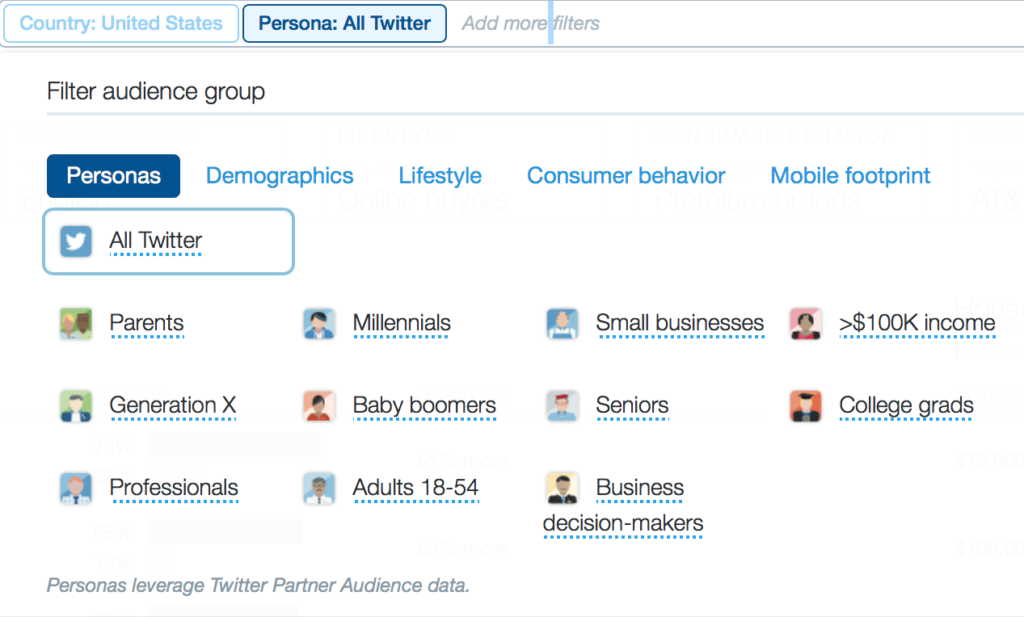
If you don’t know much about millennials, Twitter Analytics is your go-to place for learning more about them. Comedy and music understandably (from my perspective as a millennial) top the list. If you target millennials, ask yourself how you can incorporate music and comedy into your business.
In Conclusion
My 300,000 Twitter followers help me get the most out of Twitter Analytics, but you don’t need many followers to get started. Twitter Analytics provides useful data that you can tap into regardless of the size of your Twitter audience.
You can get information about your audience, or specific groups of people who use Twitter. The information is so vast that it may take you a few hours to consume it all.
By combining that information with your own knowledge and creative ideas, you can identify changes that will move your business forward.
What are your thoughts about Twitter Analytics? Do you use them for your business? Sound off in the comments section below.

Leave a Reply